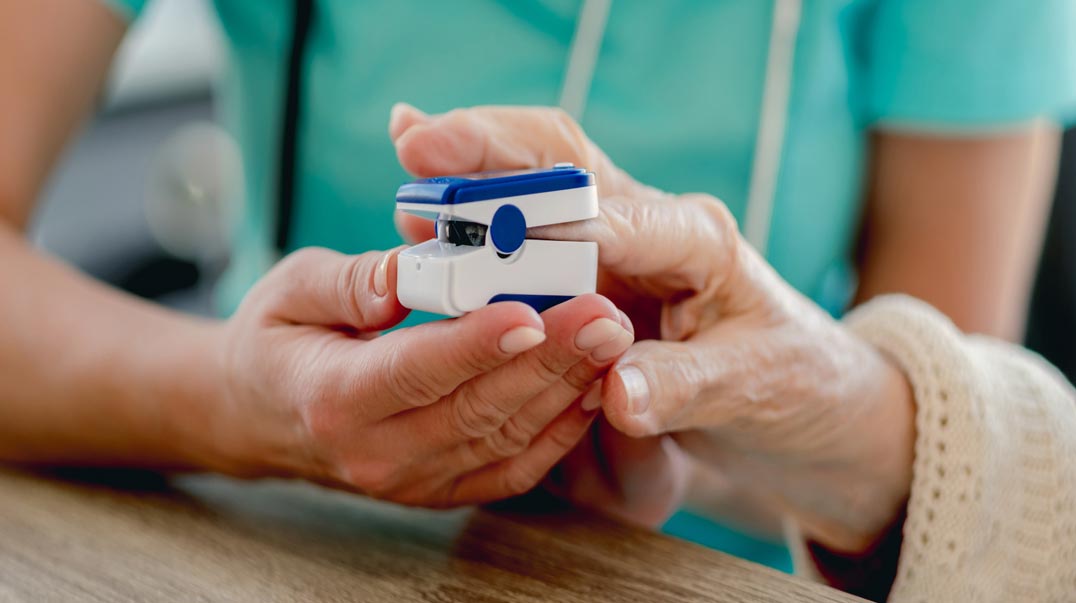Quick read summary:
The article discusses the potential of using heart rate variability (HRV) analysis, specifically with the Body Health Analyzer (BHA), as a powerful tool for effective diabetes management. It highlights the following key points:
- HRV refers to the fluctuations in time intervals between heartbeats, which is influenced by the autonomic nervous system (ANS).
- Individuals with diabetes often exhibit reduced HRV due to the effects of chronic high blood sugar levels on the ANS.
- The BHA is a device that measures and analyzes HRV, providing insights into the balance between the sympathetic and parasympathetic branches of the ANS.
- For individuals with diabetes, the BHA can be used to:
- Monitor autonomic function and track progress
- Assess the impact of interventions (e.g., exercise, stress reduction, dietary changes)
- Identify early warning signs of imbalances or complications
- Aid healthcare providers in personalizing treatment plans
- Promote lifestyle adherence by providing tangible feedback
- The article recommends integrating HRV analysis with the BHA into a comprehensive diabetes management plan, involving regular assessments, collaboration with healthcare providers, lifestyle modifications, medication adjustments, and ongoing education and support.
Overall, the article presents the BHA and HRV analysis as a valuable tool for diabetes management, empowering individuals to take a proactive approach in monitoring their condition, reducing complications, and improving overall well-being.
Harnessing Heart Rate Variability and the Body Health Analyzer for Effective Diabetes Management
Diabetes, a chronic condition characterized by elevated blood sugar levels, affects millions of people worldwide. Managing this disease requires a comprehensive approach that involves lifestyle modifications, medication adherence, and regular monitoring. One powerful tool that has gained increasing recognition in diabetes management is heart rate variability (HRV) analysis, which can be effectively utilized with the Body Health Analyzer (BHA).
HRV: A Window into Autonomic Function
Heart rate variability refers to the natural fluctuations in the time intervals between consecutive heartbeats. This variation is influenced by the autonomic nervous system (ANS), which regulates various bodily functions, including heart rate, respiration, and digestion [1]. A higher HRV is generally associated with better overall health and a well-functioning ANS, while a lower HRV can indicate increased stress, dysfunction, or the presence of certain health conditions [2].
The Link between HRV and Diabetes
Numerous studies have highlighted the relationship between HRV and diabetes. Individuals with diabetes often exhibit reduced HRV, which can be attributed to the effects of chronic hyperglycemia (high blood sugar) on the ANS [3]. This autonomic imbalance can contribute to various diabetes-related complications, such as cardiovascular disease, neuropathy, and nephropathy [4].
Leveraging the Body Health Analyzer
The Body Health Analyzer (BHA) is a cutting-edge device that utilizes HRV analysis to provide valuable insights into an individual’s physiological state. By measuring and analyzing HRV, the BHA can assess the balance between the sympathetic (fight-or-flight) and parasympathetic (rest-and-digest) branches of the ANS.
For individuals with diabetes, the BHA can be a powerful tool in managing their condition and monitoring their progress. Here’s how patients can harness the power of the BHA for effective diabetes management:
1. Monitoring Autonomic Function
Regular HRV assessments with the BHA can provide a comprehensive picture of an individual’s autonomic function. By tracking metrics like the HRV Index, Vagal Index, and Stress Index, patients can gain insights into their body’s ability to cope with stress and maintain homeostasis. This information can guide lifestyle modifications and inform healthcare providers about potential interventions.
2. Assessing the Impact of Interventions
The BHA’s pre/post testing capabilities allow patients to assess the impact of various interventions on their autonomic function. For example, individuals can measure their HRV before and after engaging in physical exercise, practicing stress-reducing techniques (e.g., yoga, meditation), or making dietary changes. By comparing the pre and post-test results, patients can identify which interventions have a positive impact on their HRV and overall well-being.
3. Identifying Early Warning Signs
Reduced HRV has been associated with an increased risk of developing diabetes-related complications [5]. By regularly monitoring their HRV with the BHA, patients can potentially identify early warning signs of imbalances or dysfunction. This information can prompt them to seek medical attention and implement preventive measures before complications arise.
4. Personalizing Treatment Plans
The BHA’s ability to provide detailed HRV analysis can aid healthcare providers in personalizing treatment plans for individuals with diabetes. By considering factors such as HRV, autonomic balance, and stress levels, providers can tailor recommendations for lifestyle modifications, medication adjustments, or complementary therapies to optimize each patient’s overall well-being.
5. Promoting Lifestyle Adherence
Maintaining a healthy lifestyle is crucial for effective diabetes management. The BHA can serve as a motivational tool by providing tangible feedback on the positive impacts of lifestyle changes on HRV and autonomic function. This visual representation can encourage patients to adhere to recommended dietary and exercise regimens, ultimately supporting better glycemic control.
Integrating HRV Analysis into Diabetes Care
While the Body Health Analyzer offers a convenient and accessible way to monitor HRV, it is essential to integrate this tool into a comprehensive diabetes management plan. Here are some recommendations for incorporating HRV analysis into diabetes care:
- Regular HRV Assessments: Patients should aim to conduct regular HRV assessments using the BHA, ideally daily, but at least a weekly basis. This consistent monitoring can provide valuable insights into long-term trends and the effectiveness of interventions. With the BHA you and/or your healthcare professionals can see how your metrics are trending.
- Collaboration with Healthcare Providers: Patients should share their BHA results with their healthcare providers, including endocrinologists, primary care physicians, and diabetes educators. This collaboration can facilitate informed decision-making and the development of personalized treatment plans.
- Lifestyle Modifications: Based on the HRV analysis, healthcare providers can recommend specific lifestyle modifications, such as incorporating stress-reducing activities, adjusting exercise routines, or making dietary changes to improve autonomic function and overall well-being.
- Medication Adjustments: In some cases, healthcare providers may consider adjusting medication dosages or exploring alternative treatment options based on the patient’s HRV data and overall health status.
- Ongoing Education and Support: Healthcare providers and diabetes educators should provide patients with ongoing education and support to help them understand and interpret their BHA results, as well as reinforce the importance of adhering to recommended lifestyle changes and treatment plans.
By integrating HRV analysis using the Body Health Analyzer into their diabetes management strategies, patients can gain valuable insights into their autonomic function and overall well-being. This powerful tool, combined with guidance from healthcare professionals, can empower individuals to take a proactive approach in managing their diabetes, reducing the risk of complications, and improving their quality of life.
References:
- Shaffer, F., & Ginsberg, J. P. (2017). An Overview of Heart Rate Variability Metrics and Norms. Frontiers in Public Health, 5, 258. https://doi.org/10.3389/fpubh.2017.00258
- Thayer, J. F., Yamamoto, S. S., & Brosschot, J. F. (2010). The relationship of autonomic imbalance, heart rate variability and cardiovascular disease risk factors. International Journal of Cardiology, 141(2), 122-131. https://doi.org/10.1016/j.ijcard.2009.09.543
- Vinik, A. I., Erbas, T., & Casellini, C. M. (2013). Diabetic cardiac autonomic neuropathy, inflammation and cardiovascular disease. Journal of Diabetes Investigation, 4(1), 4-18. https://doi.org/10.1111/jdi.12042
- Benichou, T., Pereira, B., Mermillod, M., Tauveron, I., Pfabigan, D., Maqdasy, S., & Dutheil, F. (2018). Heart rate variability in type 2 diabetes mellitus: A systematic review and meta-analysis. PLoS One, 13(4), e0195166. https://doi.org/10.1371/journal.pone.0195166
- Azulay, N., Olsen, R.B., Nielsen, C.S. et al. Reduced heart rate variability is related to the number of metabolic syndrome components and manifest diabetes in the sixth Tromsø study 2007–2008. Sci Rep 12, 11998 (2022). https://doi.org/10.1038/s41598-022-15824-0











